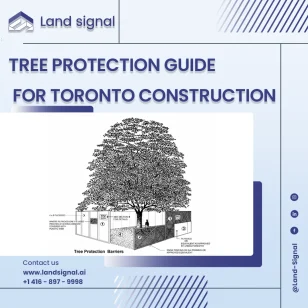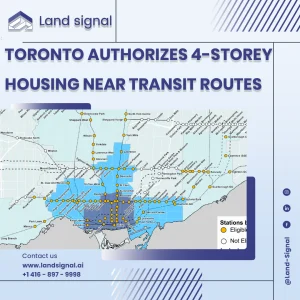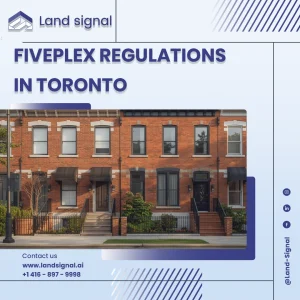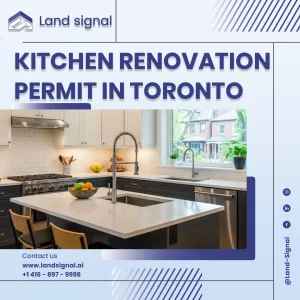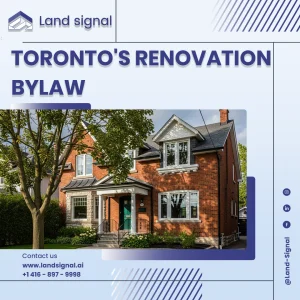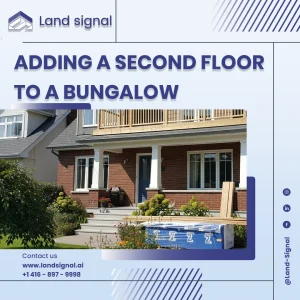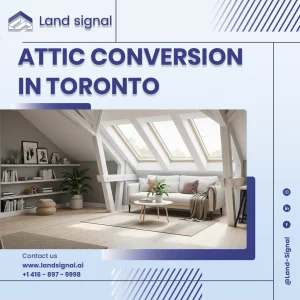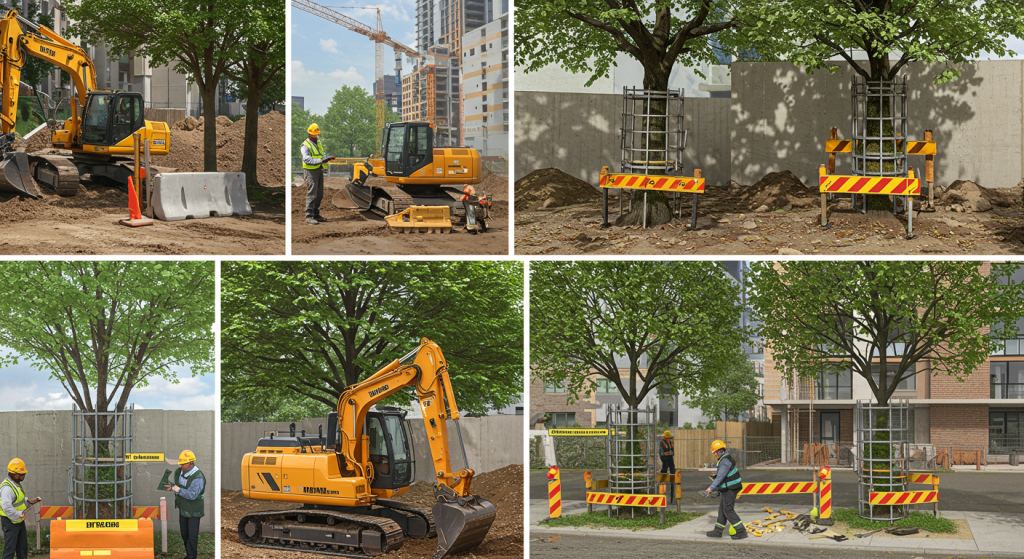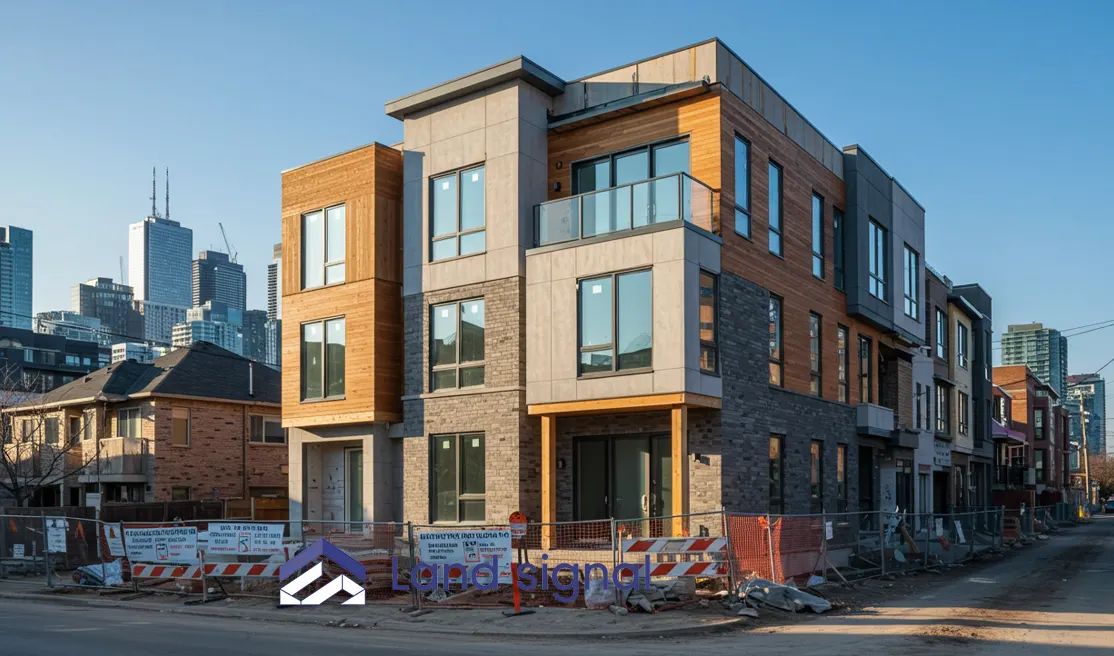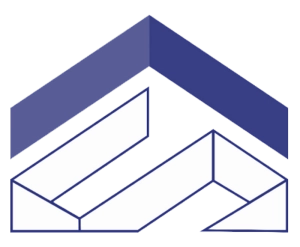The City of Toronto treats trees as living infrastructure. Its urban forest is seen as vital for shade, cooling, stormwater management and property value. Toronto’s Tree Protection Policy and Specifications for Construction Near Trees emphasizes that preserving healthy trees in development projects is crucial for achieving these goals. The policy also warns that anyone who fails to follow protection standards may be financially liable for damage to trees and can face charges under municipal tree by laws.
Tree roots are extremely vulnerable during construction. The majority of a tree’s roots lie in the top 30–60 cm of soil. Excavation, soil compaction from heavy machinery and changes in grade can sever or smother these roots, leading to irreversible decline. Because damage may not become visible until years later, Toronto’s bylaws require proactive protection of root zones, not just the visible trunk and canopy.
Toronto’s urban canopy goal is to increase tree cover to 40 % by 2050 Protecting mature trees on construction sites is therefore both an ecological responsibility and a legal requirement.
Start Your Project with Confidence
At Land Signal, we assist with construction and renovation permits, as well as Garden House and Laneway Suite designs. Let our experts guide you through every step.
Regulatory Framework for Tree Protection
Several municipal by laws govern tree protection in Toronto. Understanding which regulations apply to your site is the first step toward compliance:
- Private Tree By law (Municipal Code Chapter 813, Article III) – protects trees on private property with a trunk diameter of 30 cm or more measured at 1.4 m above ground. Replacement trees planted under previous permits are also protected regardless of size.
- Street Tree By law (Chapter 813, Article II) – applies to all trees located on city owned land such as boulevards. Any size tree on city property is protected.
- Ravine & Natural Feature Protection By law (Chapter 658) – prohibits or regulates the injury or destruction of all trees, regardless of size, within designated ravine and natural feature areas. Permit applications in ravine areas receive heightened scrutiny because of their ecological sensitivity.
- Parks By law (Chapter 608, Article VII) – protects every tree located in a City park.
Read Also : Zoning By-laws in Toronto | A Practical Guide to Navigating the Rules and Regulations
Penalties and enforcement
Failure to comply with Chapters 813 or 658 may result in compliance orders, prosecution, and significant fines. Urban Forestry may levy inspection fees for each injured or removed tree without a permit. If the fees are not paid, they are added to the property’s tax roll. Convictions carry a minimum fine of $500 per tree and can reach $100,000 per tree, plus a special $100,000 fine. For more information, visit finetoronto.ca. These penalties illustrate why proper tree protection is both prudent and cost-effective.
Tree Protection Zones (TPZs)
Defining a TPZ
A Tree Protection Zone (TPZ) is a physically fenced area surrounding a tree’s trunk designed to shield its roots, trunk and canopy from construction impacts. The TPZ is established before any demolition or excavation begins and must remain in place until construction concludes. Within a TPZ, activities such as excavation, grading, vehicular traffic, material storage, trenching or chemical disposal are prohibited. Even access by pedestrians or equipment is not allowed unless explicitly approved.
Roots extend far beyond the visible drip line; therefore, Toronto uses trunk diameter at breast height (DBH) to calculate the minimum radius for a TPZ. The distances in the table below are measured from the outside edge of the tree base and represent minimum requirements. Urban Forestry may require a larger zone depending on species and site conditions.
Minimum TPZ Distances
The following table summarizes the minimum Tree Protection Zone radii required under Toronto’s Tree Protection Policy. Distances are given for city owned and private trees (excluding ravine areas) and for trees located within Ravine and Natural Feature Protection zones. For trees with DBH greater than 100 cm, the radius is calculated as 6 cm per centimetre of trunk diameter for city/private trees and 12 cm per centimetre of diameter or the drip line whichever is greater for ravine trees
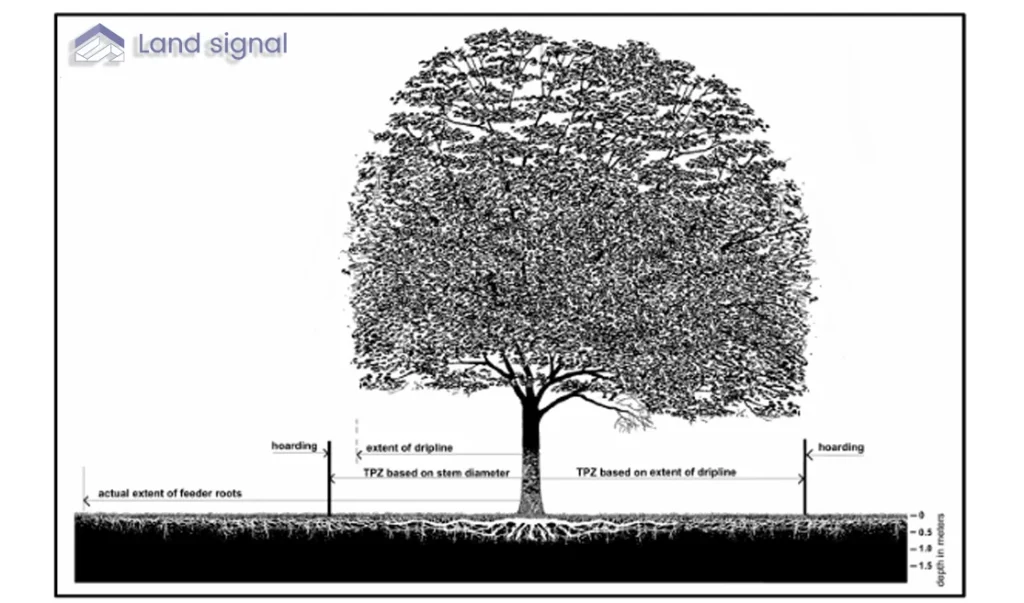
| Trunk diameter (DBH) | Minimum TPZ for city/private trees | Minimum TPZ for ravine & natural‑feature trees |
| < 10 cm | 1.2 m | The drip line or 1.2 m |
| 10–29 cm | 1.8 m | The drip line or 3.6 m |
| 30–40 cm | 2.4 m | The drip line or 4.8 m |
| 41–50 cm | 3.0 m | The drip line or 6.0 m |
| 51–60 cm | 3.6 m | The drip line or 7.2 m |
| 61–70 cm | 4.2 m | The drip line or 8.4 m |
| 71–80 cm | 4.8 m | The drip line or 9.6 m |
| 81–90 cm | 5.4 m | The drip line or 10.8 m |
| 91–100 cm | 6.0 m | The drip line or 12.0 m |
| > 100 cm | 6 cm per cm of DBH | 12 cm per cm of DBH (or drip line) |
Note: DBH is measured at 1.4 m above ground level. When calculating DBH from circumference, divide the circumference at 1.4 m by π (3.1416)
Pre Construction Planning
Arborist Reports and Tree Inventories
Proper planning begins well before construction. Toronto’s policy states that property owners should retain a qualified arborist to determine the location, species, size and condition of trees on the project site and neighbouring properties. An arborist prepares an inventory of all protected trees, including those on adjacent lots within 6 m of site disturbance for private tree by law areas and 12 m for ravine areas. This inventory forms the basis of a Tree Protection Plan that identifies which trees can be preserved and the protection measures needed.
An arborist report is typically required when applying for a building permit. The report must align with architectural drawings and clearly show the TPZ for each tree. In ravine areas or complex projects, Urban Forestry may require more stringent measures.
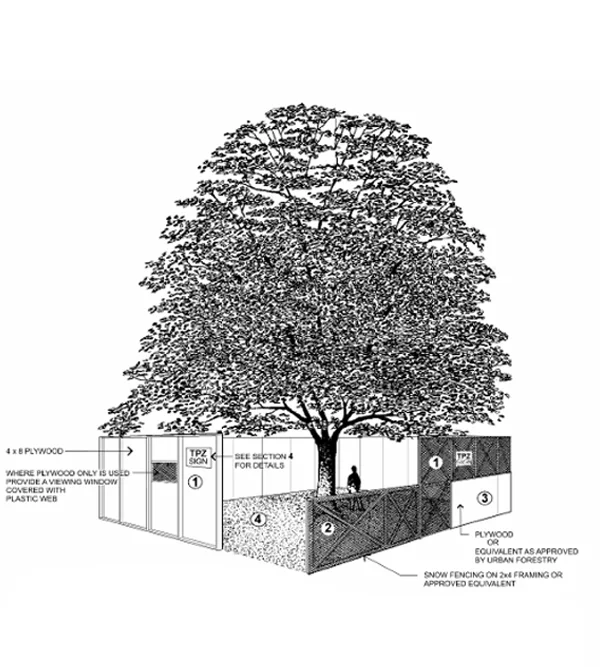
Permit Applications
Any construction activity inside a TPZ or removal of a protected tree requires a permit from Urban Forestry. The city’s Tree Protection Declaration form notes that permits are required if construction occurs within a TPZ, if a protected tree will be removed, or if fill or grade changes are proposed within a protected area Applicants must submit their arborist report, Tree Protection Plan and permit applications before the building permit can be issued. Because the permit process can be complex, many developers engage consultants (such as LandSignal) to handle by law interpretation, site plan integration and communication with Urban Forestry. On Site Tree Protection Practices
Once permits are issued and construction begins, maintaining the TPZ is a daily responsibility. Key practices include:
- Install sturdy fencing – TPZ boundaries must be enclosed with fencing at least 1.2 m high so that all workers know the area is off limits.
- Do not move the fence – The protective barrier must remain in place and undisturbed until construction is complete. Regular inspections ensure the fence is intact and correctly positioned.
- Limit excavation near TPZs – Any digging near the edge of a TPZ must be supervised by an arborist and performed carefully to avoid root damage. Exploratory excavation should use air or low pressure water techniques to expose roots for proper pruning. A permit to injure roots may be required for encroachments.
- Provide temporary root protection – If vehicle access near the TPZ is unavoidable and has been approved, layers of mulch and plywood may be used to spread weight and reduce compaction.
- Avoid prohibited activities – Within a TPZ, do not store materials, operate vehicles or dump chemicals. These activities can compact soil, cut roots or contaminate the tree’s environment.
- Replacement requirements – When the city grants permission to remove a healthy protected tree, it often requires replacement plantings. A common ratio is three new trees for each tree removed. Replacement species and locations must be approved by Urban Forestry.
Read Also : A Comprehensive Guide Home Extension Permit Toronto
Conclusion
Tree protection is a core component of responsible construction in Toronto. Adhering to municipal by laws, calculating appropriate Tree Protection Zones and engaging qualified arborists can prevent costly delays and fines. The city’s long term vision of a 40 % tree canopy by 2050 depends on the preservation of mature trees and the careful integration of development with the natural environment By planning ahead and respecting TPZs, builders can meet regulatory requirements while enhancing the ecological and aesthetic value of their projects.
Services like LandSignal can simplify this process by interpreting zoning requirements, coordinating arborist reports and managing permit applications. Whether you are a homeowner or a developer, investing in professional tree protection planning will help ensure your project contributes positively to Toronto’s urban forest.
